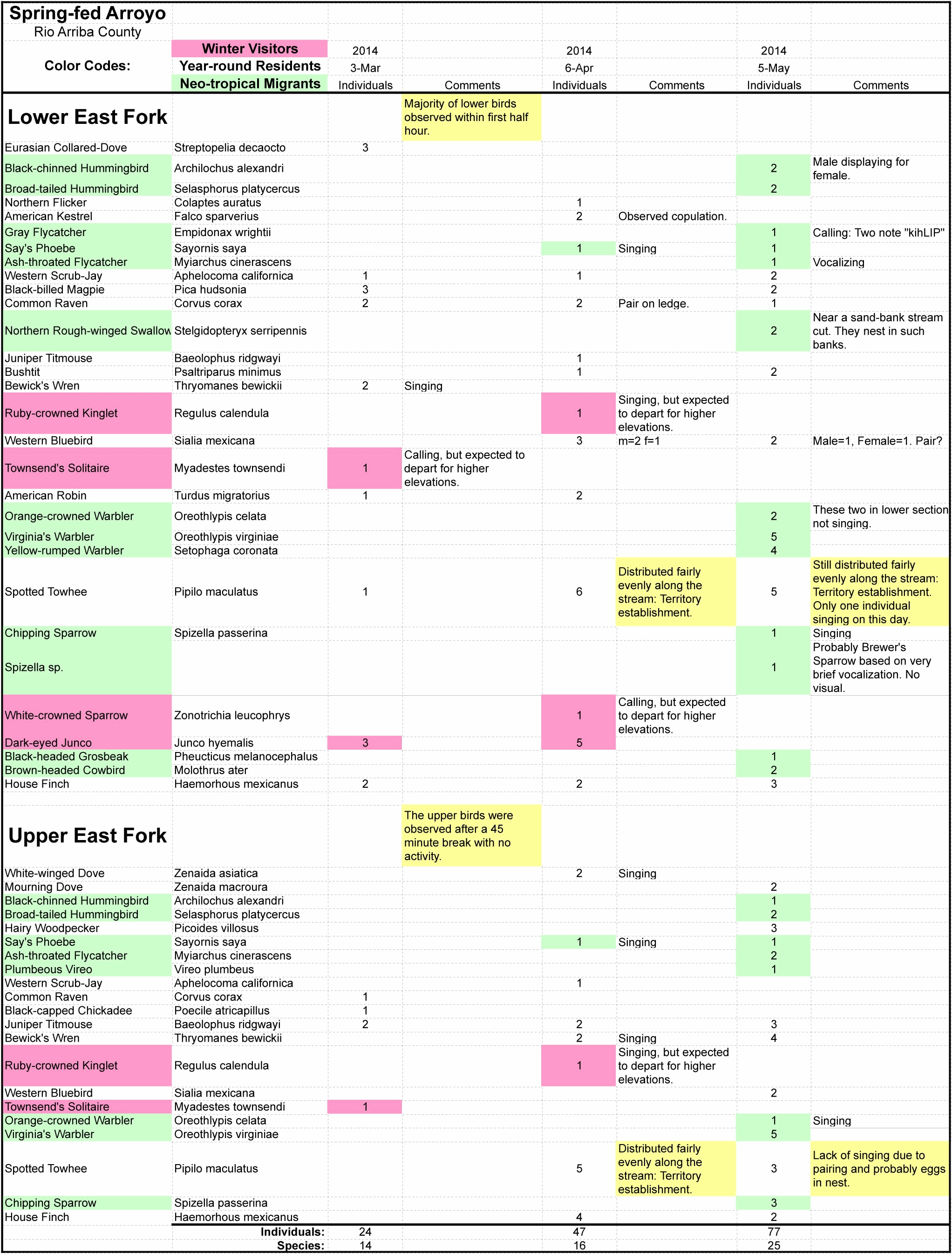
Changes in Bird Species and Number through the seasons in a spring-fed arroyo in Northern New Mexico.
From previous experience with the location, it is known that there is a great deal of breeding activity in the summer, but during the winter, birds are scarce.
The intention is to survey species and individuals once per month through-out the year. Some results from the first 3 observations are summarized in the following graphs. Full data appears in the table following the graphs.

The small summary table below and the graph to the right show the number of individuals (Purple in table and graph) and the number of species (Green in table and graph):
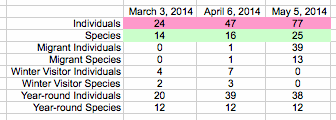
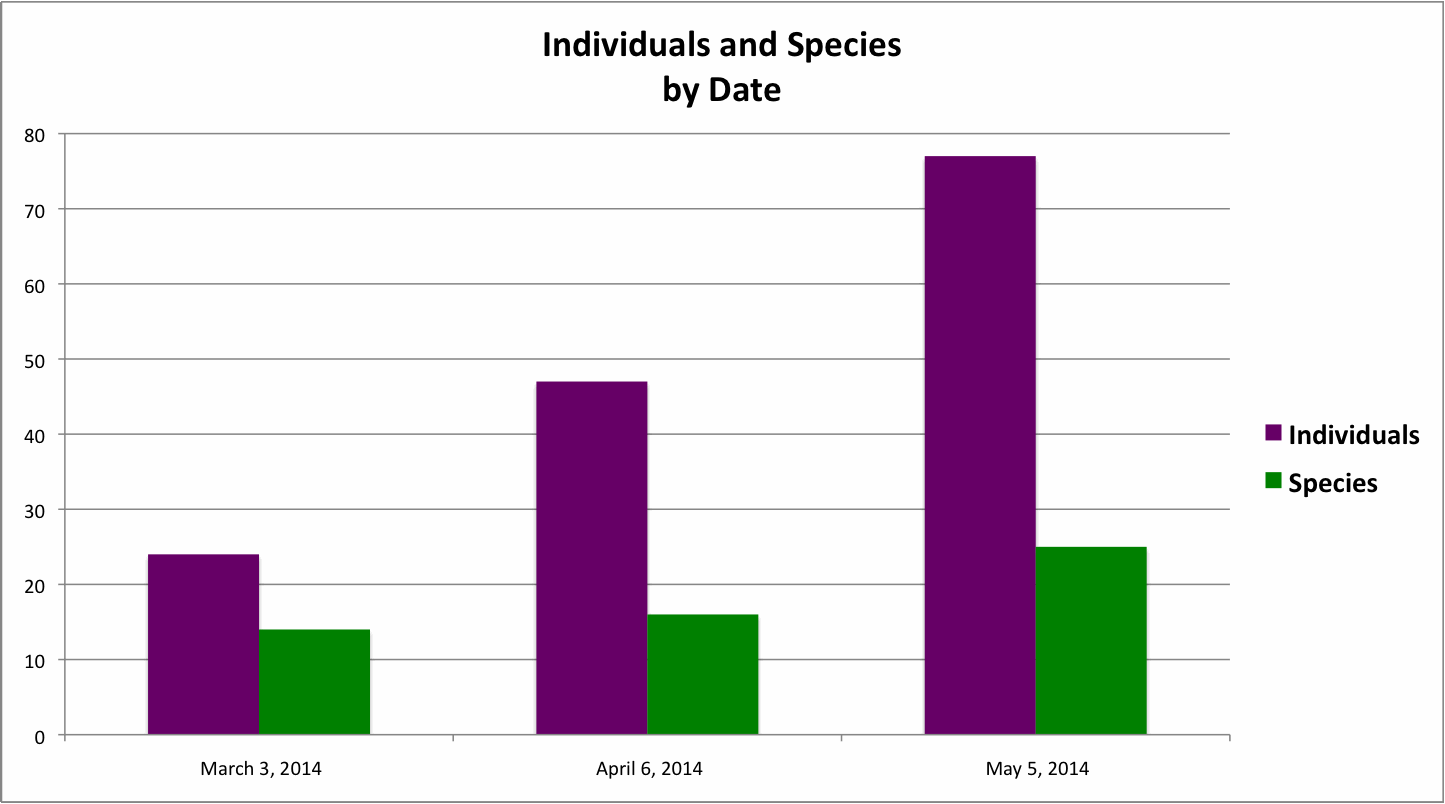
From March 3rd to May 5th, the number of species doubled and the number of individuals tripled.
This next graph breaks down the species into Year-round (blue), Winter Visitors (red) and Migrants (green).
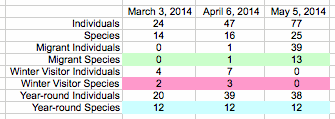
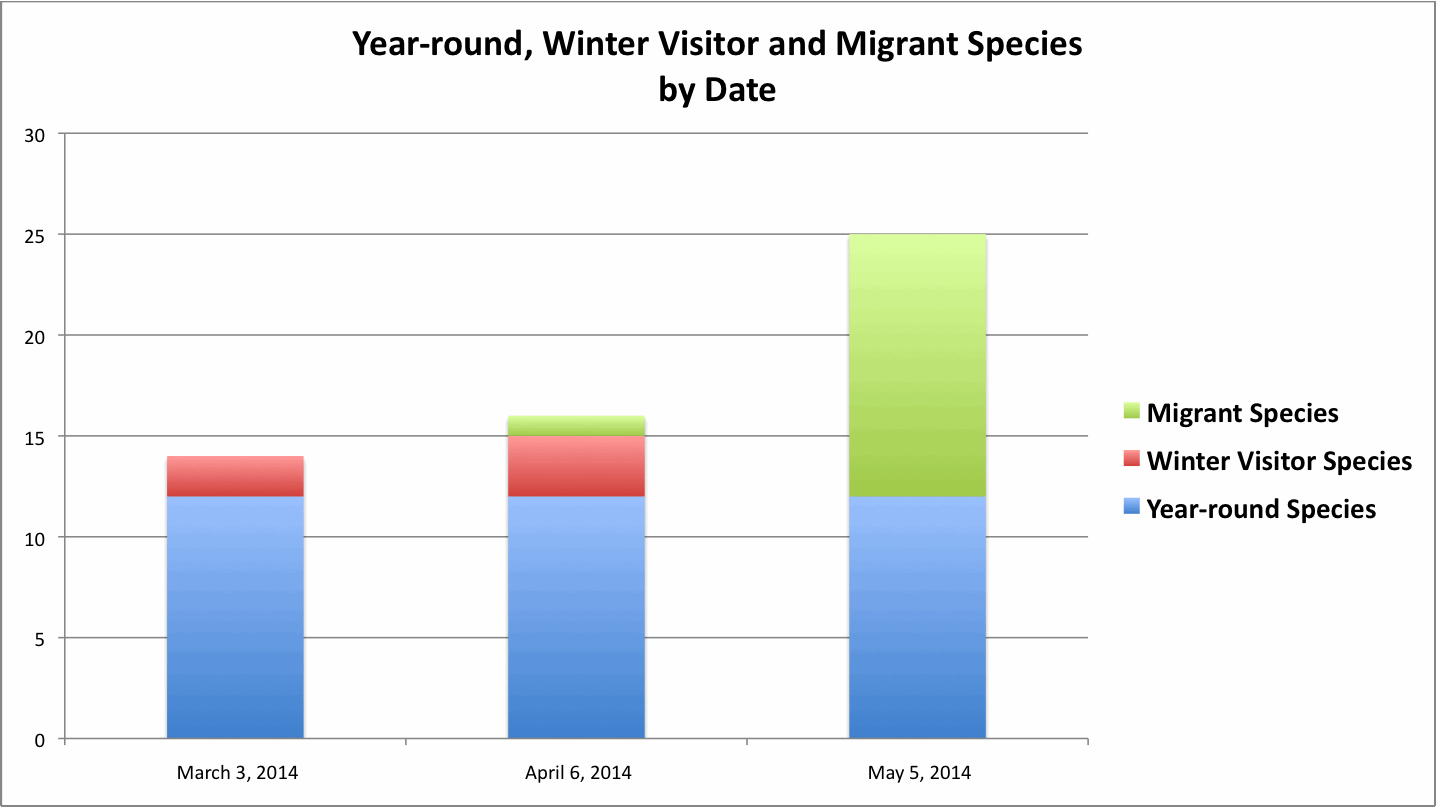
Note that the number of Year-round Species present remained constant during all three surveys.
Even though the Winter Visitor species departed before May 5th, the incoming migrants more than made up the difference. There were as many migrant species on May 5th as there were Year-round species.
This graph breaks down the counts of individuals by Year-round, Winter Visitors and Migrants.
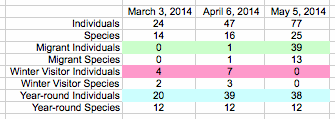
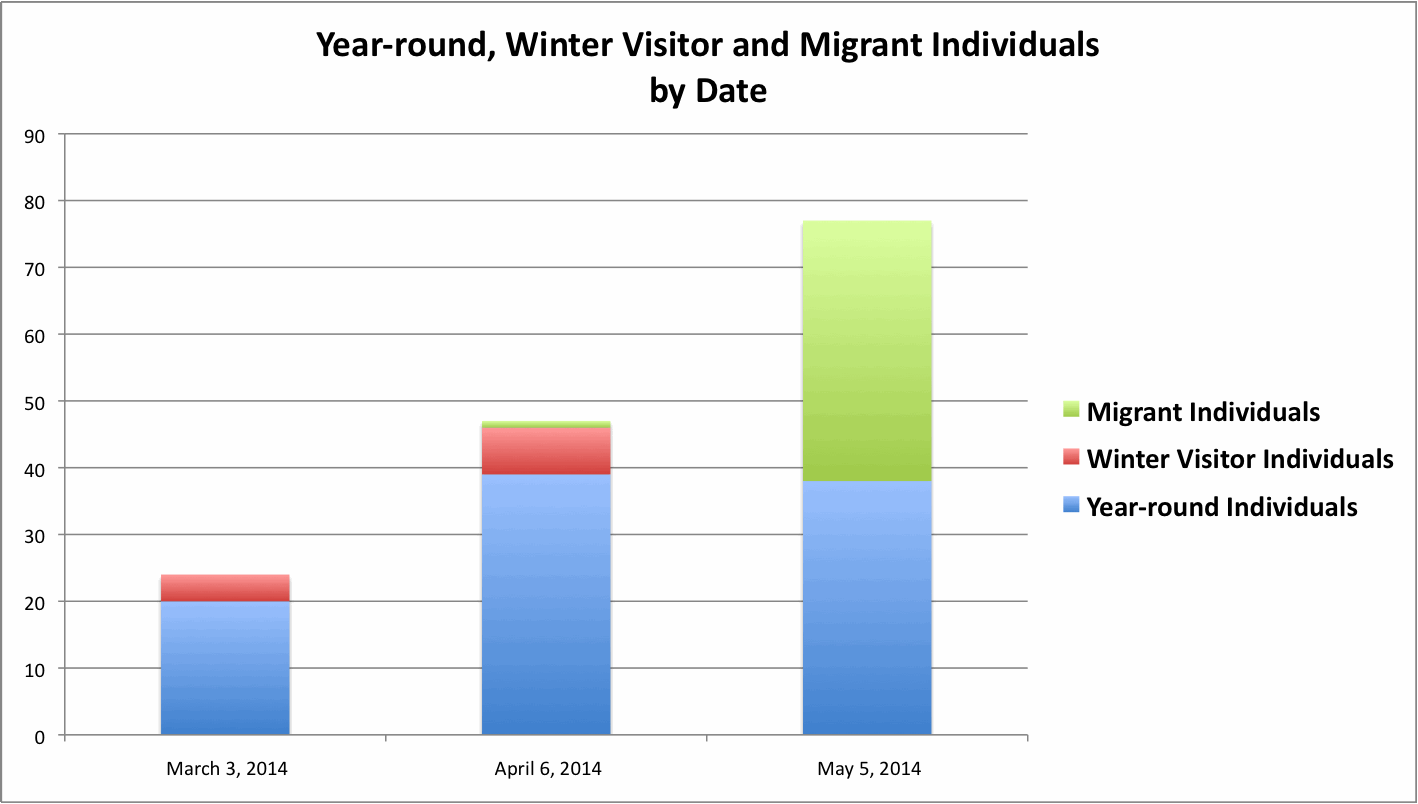
The increase in numbers of Year-round Birds between Mar 3rd and April 6th probably was driven by local breeders, after spending the winter in the river valley below the arroyo, moving up slope to establish breeding territories.
One example is the Spotted Towhee. This is a common species in winter in the river valley below. If you consult the raw data below, you will see that on March 3rd, a single Spotted Towhee was detected and it was at the very lowest reaches of the arroyo.
However, by April 6th, there were 11 Spotted Towhee detected and they were quite evenly distributed all the way up the arroyo. Though there were only 8 Spotted Towhee detections on the May 5th survey, the distribution up the arroyo was maintained.
As we have already seen in the species count, the big news was the arrival of the summer breeding migrants. As with the species count, the number of migrant individuals was essentially equal to the number of year-round individuals.Raw Data:
